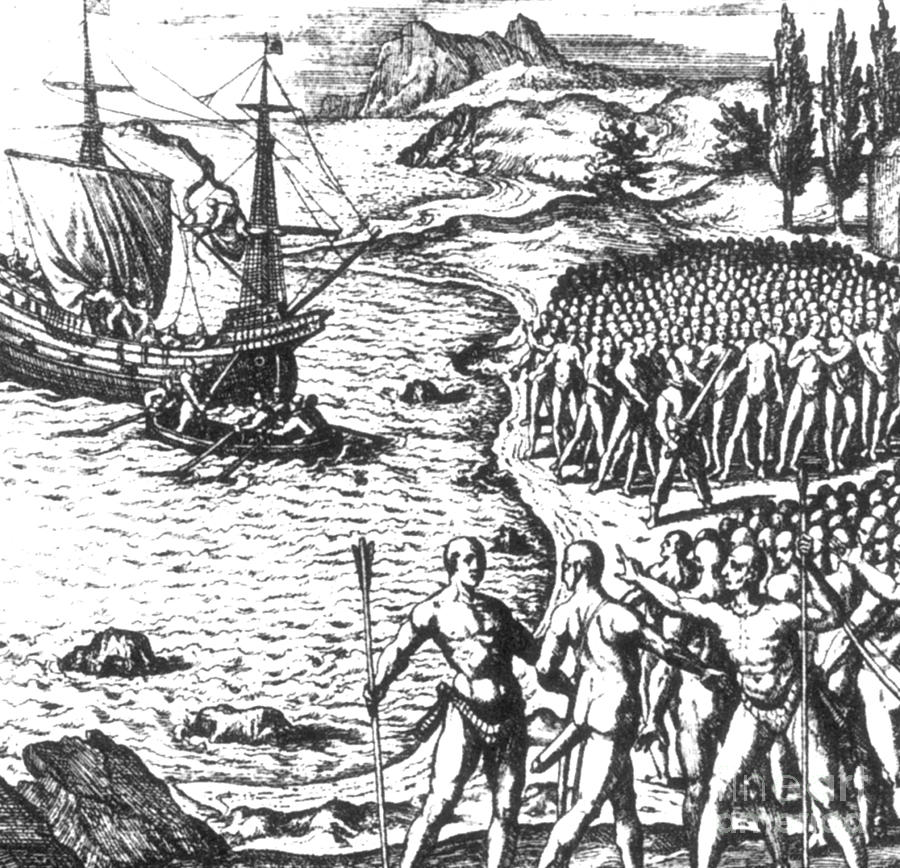Inca Civilization in 16th Century Peru
The Inca civilization in Peru had been in existence for 100 years before the arrival the Francisco Pisarro. The Incan empire had grown through a process of conquest but not necessarily occupation. Often the superior force of the Inca would spare their enemy and set them up as a vassal of the state. The goal was to expand the empire to the four corners of their world. Defeated peoples were moved across the vast Empire on the largest road system on the planet at the time (possibly 25,000 miles) to work on large construction projects. The Inca also enforced a common language, Runa Sumi.

In 1525 the dying emperor appointed Atawallpa as his successor, bypassing another son, Washkar. The brothers pitched their armies against each other for control, Atawallpa finally subdued Washkar, killing his many wives to preempt any other challenge to his reign. Fresh from this victory Atawallpa learns of a pale, hairy people sailing the wind on large canoes and riding enormous llamas. The emperor, who now ruled the four corners of the world did not fear a few pale men. His curiosity draws him to them. Historically, Pizarro hid his 168 men, horses and cannon in the dead end canyon of the square of a deserted town of Cajamarca. On November 16, 1532 Atawallpa, carried on a litter, entered the town with a thousand ceremonial troops behind him. The Spaniards protected by armor, firing cannon, and using steel weapons, slaughtered Atawallpa’s force, took him captive, ransomed him for gold and silver, and finally killed him.

In DIEBACK, the story skews from history once Addison has inked Pizarro and his enemy Kairos has brought aviation technology to the Empire. Instead of defeat in Cajamarca, Atawallpa confronts the Spaniards and their advanced weaponry with a terror in the sky unlike anything the Conquistadores could imagine. Tune in next week for that story.
Learn more about Pizarro’s encounter with Inca Civilization.
Buy DIE BACK in paperback or ebook at Amazon.com
